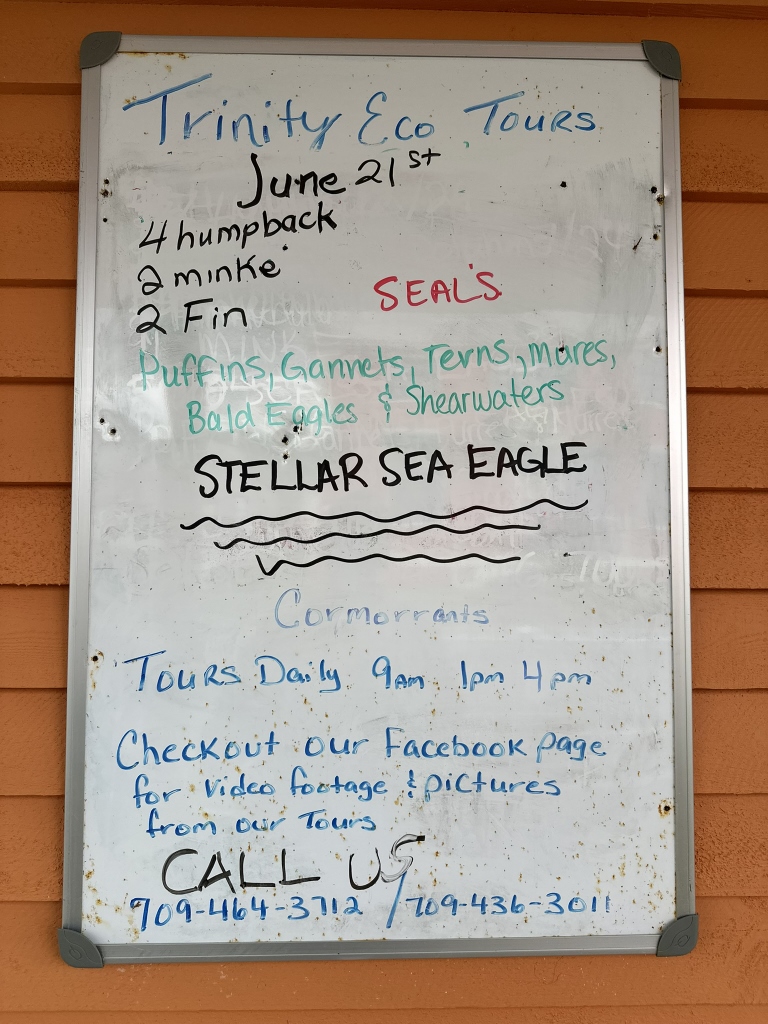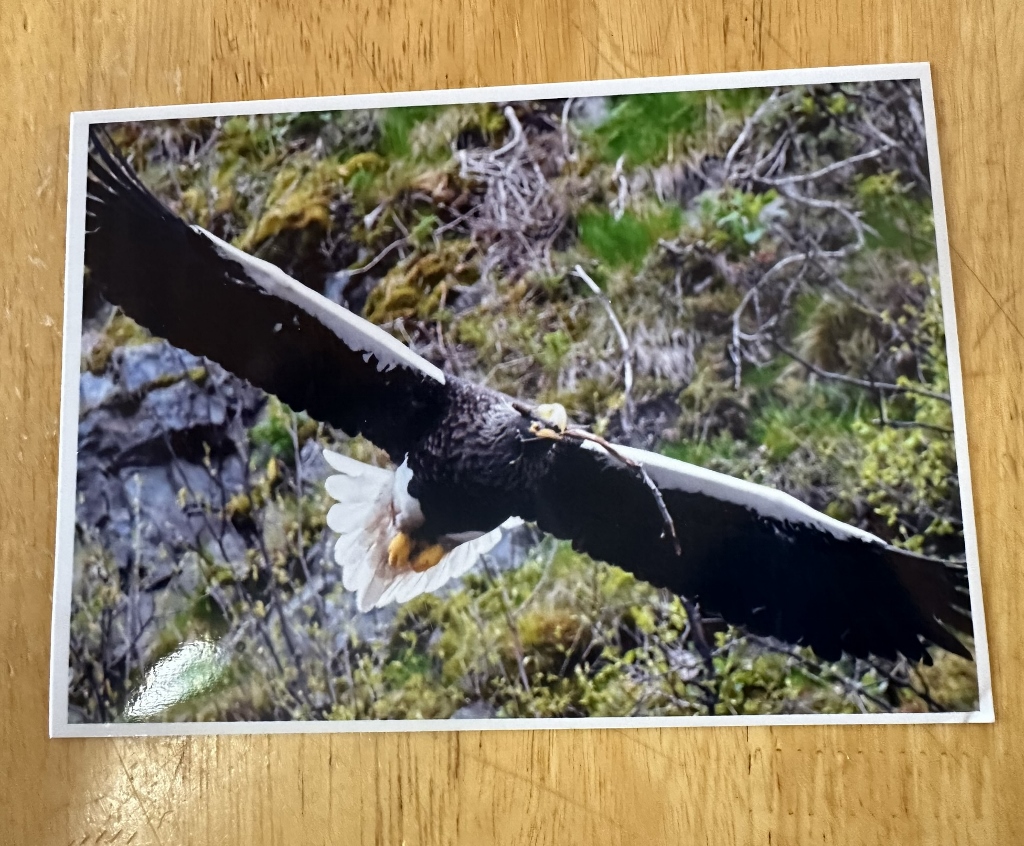June 23, 2024. Newfoundland, Canada.
Below you see my best photo of a Steller’s Sea-Eagle, taken during a boat tour off the coast of Trinity, Newfoundland. Native to the Russian Far East, Japan, and the Korean Peninsula, this bird was most certainly out of place on the far east side of the North American continent!


The Steller’s Sea Eagle was named after Georg Wilhelm Steller, a medical doctor and naturalist who sailed the eastern Pacific with Vitus Bering from 1737 to 1741. The area included Russia’s Kamchatka Peninsula and the adjacent island archipelago – the Aleutians – extending all the way to the Alaskan Peninsula.
It was pure serendipty that I was able to see the Steller’s Sea-Eagle. One day earlier I’d been in Trinity, Newfoundland with my wife Sue and our friend Uli Brauner. As I passed by the headquarters of Trinity Eco-Tours I’d noticed a reader board identifying, in addition to the whales, seals and puffins that one typically sees on such tours, the Steller’s Sea-Eagle as possible to see…my jaw dropped!
I was aware that a Steller’s Sea-Eagle had been living in North America for several years. In fact, in 2022 friends David and Mary Kay Kenney saw the eagle in Maine’s Booth Bay Harbor. Well, I couldn’t pass up the possibility of adding a Steller’s Sea-Eagle to my Life List!








It’s not uncommon for Trinity-Eco Tours groups to see the Steller’s Sea-Eagle in proximity to Bald Eagles. In fact, Trinity shared the photo below with me which shows the eagle flying with a stick. This behavior is a sure sign of nest building. While they provided no further evidence that this Steller’s Sea-Eagle could have a Bald Eagle mate, it’s a possibility (click here for an article about a Bald Eagle/Steller’s Sea-Eagle hybrid on British Columbia’s Vancouver Island in 2004).

This eagle is well known to Canadian and American birders and photographers. Online stories abound about this bird. In the magazine Canadian Geograhic, this eagle is referenced as Stella (see Wildlife Wednesday: The Vagrant Sea Eagle Boosting North America’s Economy). Another good source of information on the bird is the National Audubon Society article Inside the Cross-Country Saga of the Steller’s Sea Eagle.
Stella’s island-hopping path from Russia to North America is shown below. In all likelihood she (or he!) began her journey from the Kamchatka Peninsula. From there she flew to the Russian Aleutians/Commander Islands (red arrow) and then on to the Alaskan Aleutians (yellow arrow) before arriving on the Alaskan Peninsula.

Below I share the first three reported sighting locations for Stella after she made made landfall on the North American contintent. Since then Stella’s been moving between Canada’s maritime provinces and the coastal states in New England. Trinity Eco-Tours indicated that this was the third summer during which Stella had been spotted on tours.

The Steller’s Sea-Eagle is a quintessential coastal raptor. With a diet consisting largely of fish and waterbirds of various types, its distribution is largely limited to western Pacific coastal zones and freshwater rivers and lakes close to the coast. Authors of the book Steller’s Sea Eagle estimate the total population at 6,000-7,500 individuals. BirdLife International lists the species as vulnerable and estimates the total abundance of adults at 3,600 to 4,670 individuals.

Note: If you would like to see more of my Blog posts on eagles, click on “The Eagles” below.

One response to “Steller’s Sea-Eagle: My Lucky Encounter with Stella!”
Fantastic sighting and documentation Dan !!!